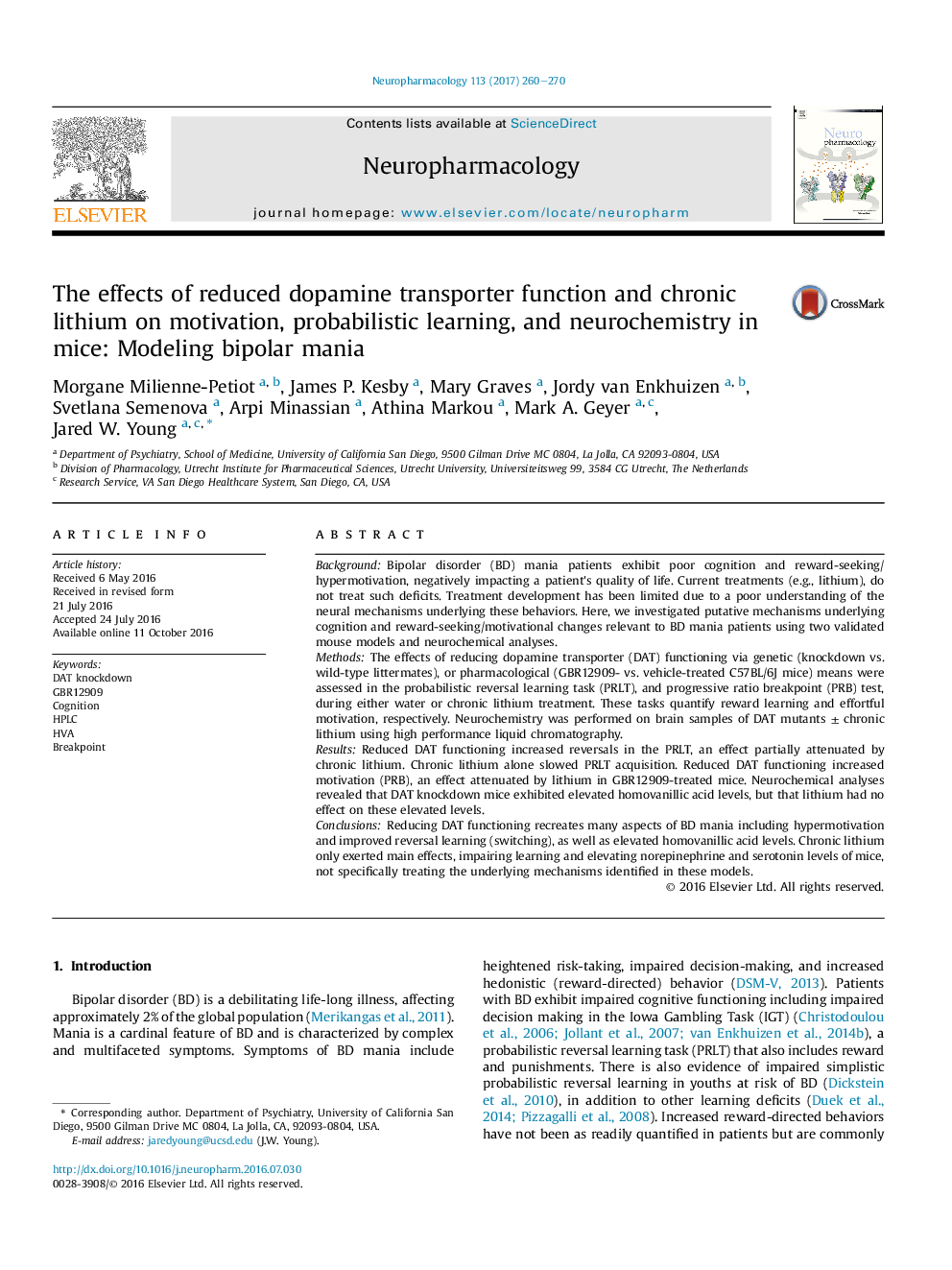| کد مقاله | کد نشریه | سال انتشار | مقاله انگلیسی | نسخه تمام متن |
|---|---|---|---|---|
| 5549148 | 1402857 | 2017 | 11 صفحه PDF | دانلود رایگان |
- Reduced dopamine transporter levels improved reversal learning and motivation.
- Such reductions also resulted in elevated homovanilic acid levels in mice.
- Chronic lithium alone impaired probabilistic learning in mice.
- Lithium remediated behavioral effects of reduced dopamine transporter levels.
- Lithium exerted only main, not synergistic effects, on neurotransmitter levels.
BackgroundBipolar disorder (BD) mania patients exhibit poor cognition and reward-seeking/hypermotivation, negatively impacting a patient's quality of life. Current treatments (e.g., lithium), do not treat such deficits. Treatment development has been limited due to a poor understanding of the neural mechanisms underlying these behaviors. Here, we investigated putative mechanisms underlying cognition and reward-seeking/motivational changes relevant to BD mania patients using two validated mouse models and neurochemical analyses.MethodsThe effects of reducing dopamine transporter (DAT) functioning via genetic (knockdown vs. wild-type littermates), or pharmacological (GBR12909- vs. vehicle-treated C57BL/6J mice) means were assessed in the probabilistic reversal learning task (PRLT), and progressive ratio breakpoint (PRB) test, during either water or chronic lithium treatment. These tasks quantify reward learning and effortful motivation, respectively. Neurochemistry was performed on brain samples of DAT mutants ± chronic lithium using high performance liquid chromatography.ResultsReduced DAT functioning increased reversals in the PRLT, an effect partially attenuated by chronic lithium. Chronic lithium alone slowed PRLT acquisition. Reduced DAT functioning increased motivation (PRB), an effect attenuated by lithium in GBR12909-treated mice. Neurochemical analyses revealed that DAT knockdown mice exhibited elevated homovanillic acid levels, but that lithium had no effect on these elevated levels.ConclusionsReducing DAT functioning recreates many aspects of BD mania including hypermotivation and improved reversal learning (switching), as well as elevated homovanillic acid levels. Chronic lithium only exerted main effects, impairing learning and elevating norepinephrine and serotonin levels of mice, not specifically treating the underlying mechanisms identified in these models.
299
Journal: Neuropharmacology - Volume 113, Part A, February 2017, Pages 260-270
